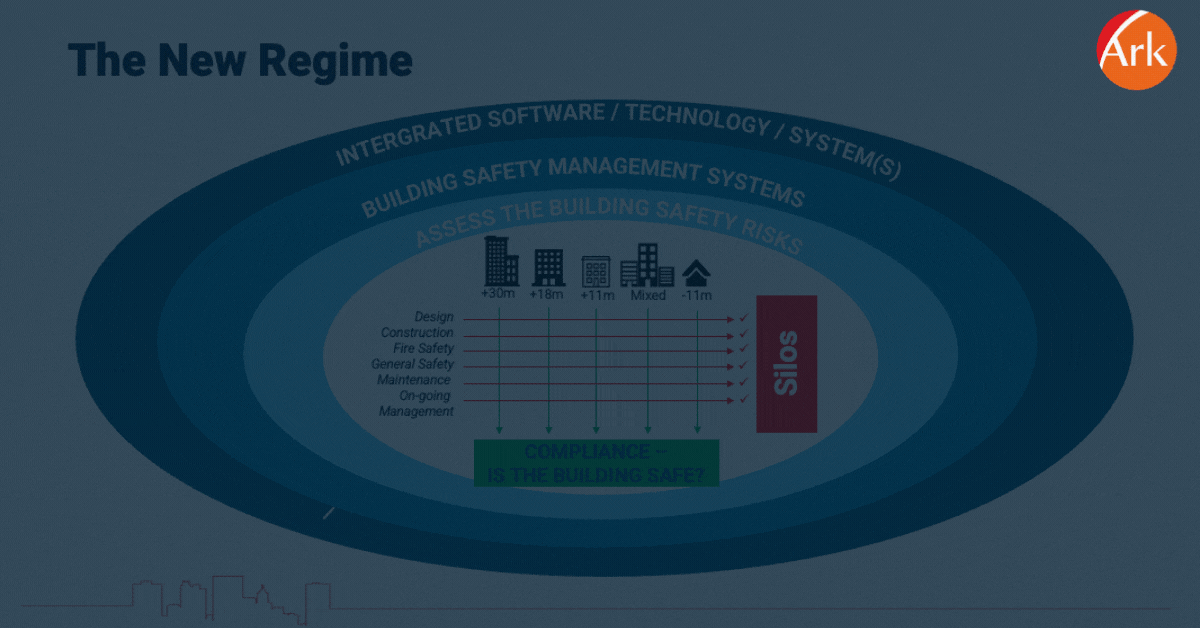The 4th webinar, in the Building Safety Series - The Works we covered 'What you need to know about Fire Risk Assessments (FRAs)'
Over the past 4 months, The British Property Federation and Ark have been working in partnership to deliver hints, tips and advice so organisations are better prepared ahead of the regulatory regime changes due to come into force as a result of the Building Safety Bill.
During the webinar, we explored:
- the new regime,
- the Fire Risk Assessment approaches and much more.
If you missed the webinar live or would like to watch it again, here is the replay:
Questions and Answers from the webinar
Q: How are you managing to gain access to flats - are leases being amended to allow access?
A: Access is generally with tenant permission arranged through the agent, it can be problematic but in the main, there always appears to be a cohort of tenants who take the subject seriously enough to see the benefits and allow such access.
It can therefore be helpful to consider any vacant flats (if any). We would also suggest that it is important as well to consider any commercial tenants (which whilst outside of the proposed RRO changes (subject to the Fire Safety Act) does allow for this holistic, whole-building approach to be completed.
We are not aware of any changes to leases at the moment regarding access - that may change.
Q: We tend to have issues with consistency on how often the FRA should be reviewed. We would argue this should be done annually however would appreciate your comments on how often this should be carried out?
A: Depending on the building and its type Annual is generally accepted unless there are circumstances or situations which require that to be changed - as a result of a fire for example - or changes to the building. Going forward with the Bill, any changes to an HRB that impact the FRA, should trigger a review of the FRA as well as the Safety Case each time.
In addition, each time a new AP comes online or if the Regulator requires the Building Assessment Certificate to be re-applied for then an FRA will also be required at that time as well.
Q: Are you suggesting that an intrusive survey of the building is carried out on an annual basis?
A: An intrusive review annually is in our opinion not required and I can confirm that this was also confirmed by the policy director at the NFCC.
The intrusive survey is designed to establish the materials and their configuration, utilised throughout the building (albeit on a sampled basis).
It is entirely possible that a lower level of intrusive nature will not be required if good as-built information is available.
At the end of the day it is about making sure that the FRA is suitable and sufficient.
Q: Can the RP and AP be the organisation/employer?
A: The AP (Accountable Person) and RP (Responsible Person) can be the same organisation/person.
The AP is the role that holds the ultimate accountability and is often the building owner (depending upon leasing arrangements).
The RP is often the managing agent. In BTR (build to rent) for example, the AP and RP are likely to be the same.
Q: Are Higher Risk Buildings (HRB) always residential buildings and an addition those over 18m high or can HRB also apply to other forms of building such as Commercial Offices?
A: The Bill is currently targeting residential properties over 18m or 7 storeys in England although we understand that the Assembly in Wales may elect to bring this down to 11m. Residential is defined as buildings with 2 or more demises where people sleep.
Commercial properties are not covered by the Bill, nor are other residential/institutional buildings such as hotels, prisons and hospitals for the time being.
It should be noted that under the bill, powers are provided to the Minister to extend the scope and therefore such properties should not be ruled out completely.
Q: In terms of the responsible persons extended duties under RRO
- Can you confirm what the scope of this will actually mean?
- Just where two or more domestic dwellings within a building or elsewhere?
- What is the definition of domestic dwelling and if the whole building needs to be risk assessed and controlled, what powers of enforcement will the FRS in entry to domestic premises?
A: There is a definition provided within both the Bill and the subsequent draft regulations which effectively states that residential has to include 2 or more domestic dwellings or two or more rooms used for residential purposes or student accommodation (this of course can be amended by the Minister).
The RRO will, once the Fire Safety Act (in England) has commenced, define residential (for the purposes of Article 6) as a property containing two or more residential units. FRSs have powers of entry and if needed they can apply for a warrant under the powers within the RRO which will be considered by a Judge.
The RPs duties are set out in the RRO - yes these are being altered to cover additional areas covered by the Order as detailed above in respect of scope. But they currently do not extend the requirements relating to general fire precautions etc.
Q: Are there access rights within the BSB to allow the type 3 and 4 assessments to take place especially intrusive surveys within flats?
A: The bill does provide for the provision of reasonable access to be provided to the accountable person and residents will be obliged to allow such access.
Q: Gaining reasonable access to apartments/flats (with suitable notice) is very difficult with many residents - what is the legal position from a fire safety perspective if access is refused?
A: The bill does provide for the provision of reasonable access to be provided to the accountable person and residents will be obliged to allow such access.
Q: If there are premises in England that have entered into a primary authority scheme with an authority in Wales, for example, will the primary authority concept be dufunked?
A: I do not see any change to the primary authority arrangements other than recognising the role of the Regulator who, in respect of HRRBs has a primary role.
The bottom line is that in Wales it would appear to be planned to apply to buildings over 11m and England currently over 18m, the enforcement and primary authority role doesn't appear to change.
Q: if we are going towards the "holistic! approach to Fire Safety, shouldn't the FRA and compartmentation surveys be done as one survey in order to create a single item that alongside the EWS can give a full view of the development?
A: Whilst generally we would agree- we would suggest that if the property already has information relating to the compartmentation and external wall system we do not see any reason why, unless things have changed, for these to be undertaken again or at the same frequency as the FRA.
Yes, the assessor really does need as much information about the construction of the building, the inner workings, the maintenance and testing arrangements in order to complete a suitable and sufficient assessment - but again the documentation has to be relevant and proportionate.
Q: What percentage constitutes a sample
A: Assuming that this is referring to the sampling of the tenant's demises for a Type 3 FRA, then between 10-20% is an appropriate sample depending upon both evacuation strategy, the issues found and the number of different types of flats.
In any case, it is important for the fire risk assessor to justify the sample rate within the assessment and ensure that this goes across the whole building - not just on a few floors.
The webinar was chaired by Ian Fletcher from the British Property Federation and the speakers included:
- David Hills from Ark,
- Russ Timpson from Tall Building Fire Safety Network and Crisisboadroom,
- Mary-Anne Bowring at The Ringley Group & BTR Planetrent.
Here is a snippet of some of the points David covered during the webinar:

Draft Building Safety Bill – Government Intent
The objectives of the draft Bill are to learn the lessons from the Grenfell Tower fire and to remedy the systemic issues identified by Dame Judith Hackitt.
This will be achieved by ensuring there is greater accountability and responsibility for fire and structural safety issues throughout the lifecycle of buildings in.
- The government have been advising building owners and those who support them to move on building safety before legislation has caught up
David goes on to say
“The dutyholder for a HRRB should demonstrate that the fire risk assessment for the WHOLE BUILDING has been undertaken … and reviewed regularly (dependent on risk and
as agreed with the regulator) so as to keep it up to date ...”
“ …a new era of accountability the most significant and fundamental changes to building safety legislation in decades. The Minister has made it clear… There is no excuse, industry must act now and not wait for the legislative programme to catch up… The industry should also prepare for the substantial changes that are coming, now.”
Watch the replay to find out more!
- The new regime
- Legislative and cultural change
- Fire Risk Assessment approaches and options
- The effects of the Fire Safety Act and more...




Leave Comment